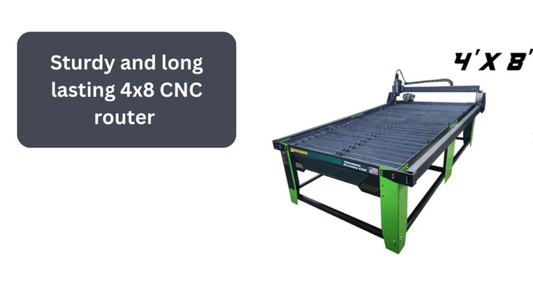Techniques and Tips To Improve CNC Plasma Table Cutting Quality
Unlike welding, CNC plasma cutting is not difficult to learn. As fabricating experts, we know how easily a CNC plasma cutter cuts metal like butter. But mastering a CNC plasma table-cutting machine requires more than just turning on a button.
From setup to technique, some tips and tricks will help you improve your CNC machine cutting quality. Let’s learn them –
8 Techniques and Tips to Improve CNC Plasma Table Cutting Quality

Tip 1. Choose the Right Plasma Cutter
When choosing the right plasma cutter, keep these things in mind - power, cutting speed, and precision.
- Power Output: This depends on the thickness of the material. So, make sure the CNC machine has sufficient power output to cut through the metal thickness.
- Cutting Speed: Cutting speed measures at inches per minute (IPM). If a machine cuts 1/2-inch material, can do it in 5 minutes. While another machine can do it in only 1 minute. The cutting speed of a CNC plasma table matters. High speed is good for improving productivity, but simultaneously, you will need to balance it with quality.
- Precision: Look for CNC machines that offer fine-tuned control over the cutting process.
Read Beginners Guide on CNC Plasma Cutting
Tip 2. Optimize the Torch Height
This is like the distance between pen and paper. Too high a pen will not be able to write properly. And too low will probably damage the pen nip and paper. When it comes to CNC plasma table machines, too high the torch height will stretch the plasma arc, leading to incorrect cuts. And the too-low torch height can damage the torch as well as the workpiece/metal.
Hence, the best tip is to use an automated torch height control system. This can help you with an ideal height.
Tip 3. Select the Right Consumables
Are you using the right consumables?
If the electrode or tip wears down or is broken, this can impact the cutting quality. So, it is important to check consumables regularly. For example - if the metal slag is covering any air holes and if nozzles and electrodes are chipped, burned, or notched.
However, it is good to remove the tip hole when it becomes irregular and/or covered with specks. Also, remove a pit when it forms on the tip of the electrode. Selecting the right consumable is not just about improving the cutting quality, but also improving the CNC plasma cutter’s performance and longevity.
Tip 4. Adjust Cutting Speed
Cutting 14 Degree material 14g Premier Plasma CNC
Adjusting the cutting speed is also important to improve the cutting quality of CNC plasma table machines. Dross (the excess melted metal) is the best way to know an ideal cutting speed.
If you go too slow, you end up with a rough, dross-covered edge. This dross is easy to remove. On the other hand, if you proceed too fast, you end up with a thin layer of molten metal accumulating at the bottom of the cut. Unfortunately, too-fast dross is difficult to remove; it needs grinding.
The solution is simple - either follow the manufacturer's recommendations or minimize the cutting speed so that the arc has time to catch up with the torch speed.
Tip 5. Maintain Clean, Dry Air Supply
Clean, dry air is a must for the smooth operation of CNC plasma table machines. It is true that impurities in your air supply, like moisture or oil, can lead to machine damage, inconsistent cutting quality, and premature consumable wear.
Regular check air supply and filtration system. If gas is leaking or the flow is restricted, contact the gas distributor and get help if needed.
Therefore, invest in pure, high-quality gas and ideal-sized regulators and gas lines. Use a good quality air dryer to prevent moisture, especially in humid climates.
Tip 6. Fine-Tune CAD/CAM Software
As experts, we know CAD/CAM software helps minimize errors and improves productivity. However, using an advanced CAD/CAM software can enhance the cutting process:
- Toolpath Optimization: Optimize toolpaths to reduce unnecessary movements and improve efficiency.
- Lead-In and Lead-Out: To avoid starting and ending cut imperfections, use appropriate lead-in and lead-out strategies.
Tip 7. Amps & Travel Speed
Amperages and travel speed affect each other. For amps, you just need to set your CNC plasma table machine to run at its maximum amps for every cut.
Let's talk about travel speed.
For cutting thicker metal, set the CNC plasma cutter to full output and vary the travel speed. When working with thinner material like sheet metal, reduce the amperage and switch to a lower-amperage tip to maintain a narrow kerf.
How do you know an ideal travel speed?
An ideal travel speed is when the sparks fly straight down from the cut and the torch is moving smoothly over the material. If it sparks flying back, this means you are running too fast. Running at the right speed with the right amount of heat gives a clean cut with less dross (the excess melted metal).
Tip 8. Do Sample Cuts and Adjustments
So, now you know all the necessary tips and techniques to start with a CNC plasma table machine.
To ensure you find the right cut, take a sample metal piece of the same thickness you are planning to cut. Adjust the machine according to your metal-cutting needs. So that, when you cut the actual piece, you will find a perfect travel speed and a clean cut with minimal cleanup.
Conclusion

Achieving high-quality cuts with your CNC plasma table requires a combination of the right equipment, careful adjustments, and regular maintenance. By following these techniques and tips, you can enhance the precision, efficiency, and overall quality of your plasma-cutting operations. Want to learn more? Visit Premier Plasma’s Learning Material.
For more expert advice and to explore high-quality CNC machines and consumables, contact Premier Plasma’s team of specialists. Let's cut to perfection together!



